If you’re anything like us, your Gmail account is the control center for your business.
You and your team use your inbox every single day to:
Despite the importance of your email inbox, most businesses’ Gmail accounts are a blind spot.
In this guide, we’re going to show you how to transform your Gmail account activity into key insights that you can use to improve how your team uses their email inboxes.
Let’s dive in.
Gmail email analytics software gives you insights into how you and your team use your Gmail account. For example:
These metrics aren’t available in Gmail out-of-the-box, so a Gmail email analytics tool is essential if you want to level up how your team uses email to support existing customers and engage with new ones.
The first feature to look for is that it measures your team’s email reply times.
Once you start using your email analytics tool like timetoreply, it’ll track your inbound and outbound emails, and show you metrics such as the average length of time it takes for your team to respond to customers and inbound emails.
You can break down your reply time metrics by criteria such as:
As you gather data, you will be able to see if your team is responding to customers within your target times, and whether or not certain team members tend to reply faster than others.
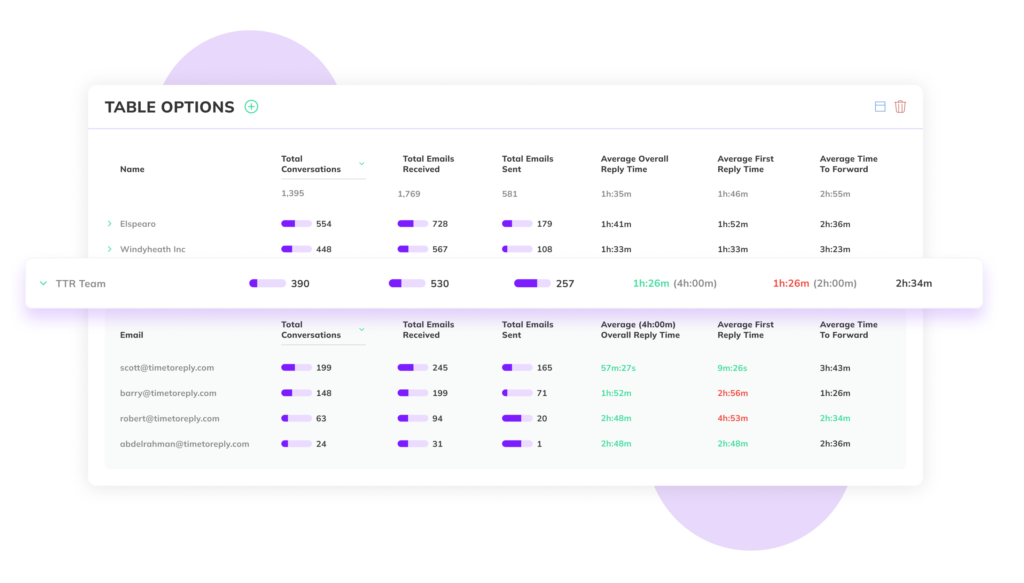
Using the reply time data you can set new goals and KPIs for your team to ensure you never leave a customer or sales lead waiting to long for a reply.
To help you hit your reply time goals, look for Gmail email analytics tools with real-time alerts. These alerts will notify you when new emails come in from customers, leads, or team members. When you see the alert, you can jump into your inbox and reply.
Why is this an important feature?
You can use it to ensure the most important emails never get missed or left behind. For example, if you’re working on closing a new contract, you can enable real-time alerts to show in your browser whenever new emails come in from that particular sales lead.
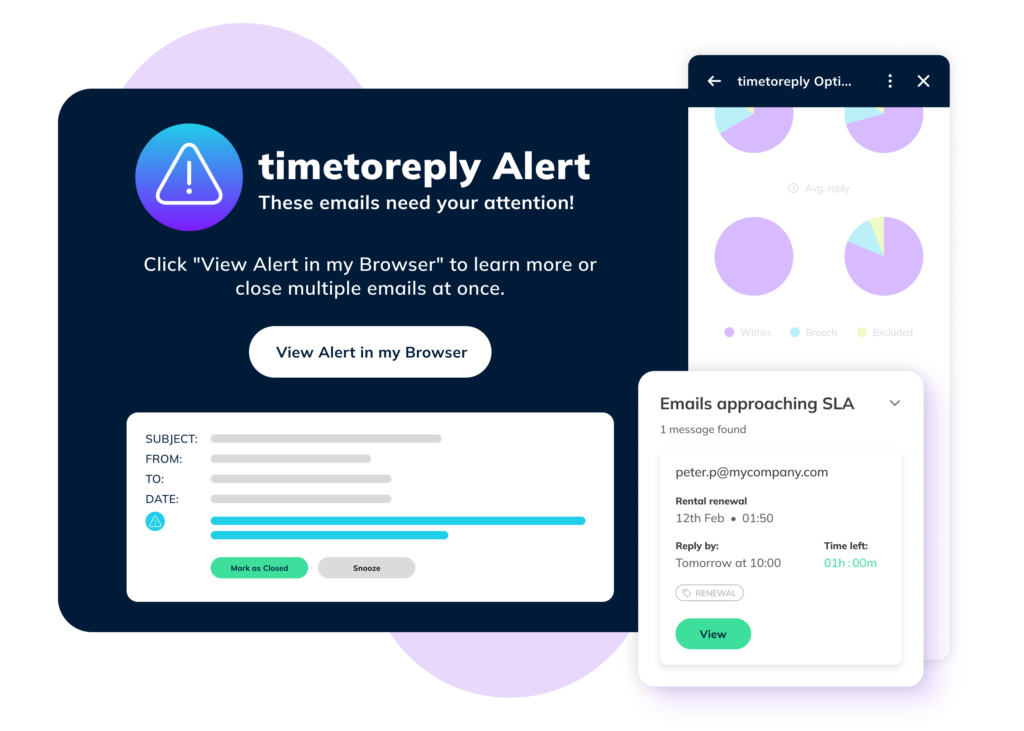
When you get your alert, you can jump into your inbox and ensure your lead isn’t kept waiting.
It’s a feature that will help make your email analytics more actionable — rather than simply monitoring your email activity, it can help you improve it.
To understand your Gmail activity metrics in context, you need to be able to compare your email activity levels over time.
By having historical email activity data available, you are able to track the key metrics in your business over time to see how they compare.
For example, if you hired a new customer service agent with the idea that it would bring down your time to reply to customer service tickets by an average of 20%, you can look at your trend graph to see if the new hire has the effect you hoped for.
Over time, you can adjust your email reply time goals and best practices to ensure they’re positively affecting your business, rather than just being extra metrics your team needs to look at without full context.
| timetoreply | Email Meter | Email Analytics | Front App | |
| Measure email reply times | ✅ | ✅ | ✅ | ✅ |
| Set reply time goals | ✅ | ❌ | ❌ | Yes, with SLA management rules |
| SLA measurement | ✅ | ❌ | ❌ | ✅ |
| Real-time alerts | ✅ | Only on Pro plan and above | ❌ | ✅ |
| Scheduled email analytics reports | ✅ | ✅ | ❌ | ✅ |
| Gmail and Outlook compatible | ✅ | Only Gmail | Only Gmail | ✅ |
| GDPR Compliant | ✅ | ✅ | ✅ | ✅ |
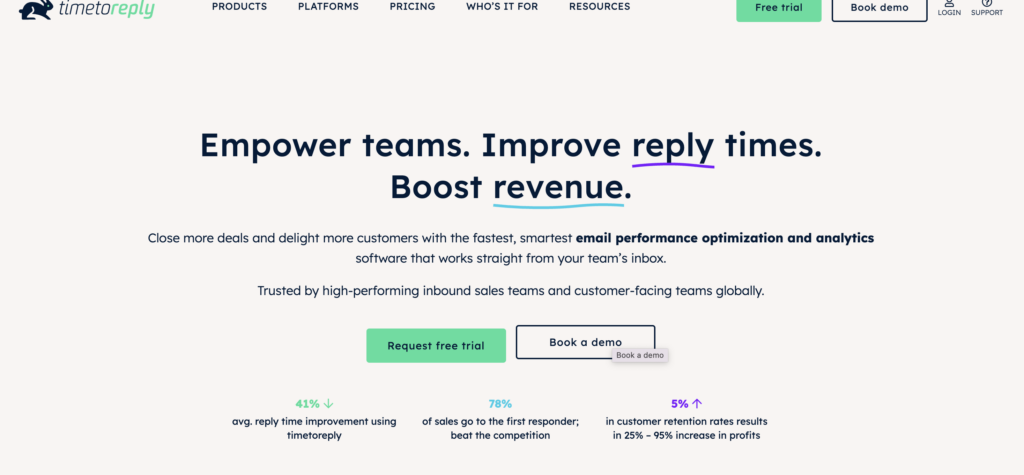
timetoreply is an email analytics platform that connects to your team’s inboxes and gives you actionable insights and analytics into your performance.
Once you start using it, you’ll see historical data on your team’s email usage, including data on:
On top of these powerful Gmail email analytics, you’ll be able to create SLA goals to help you track if your team is hitting your email reply time targets, and schedule regular automated reports so you can track performance on an ongoing basis.
To ensure you and your team always reply to high-priority emails quickly, you can also set up real-time email alerts. When an email comes in, you’ll be notified and you can jump into your inbox to help out your customer or sales lead.
It’s the perfect tool to get your email response management processes up and running and will support you as your business and email needs grow.
timetoreply has various pricing plans to fit your company depending on your needs.
All plans give you access to a suite of powerful Gmail email analytics features, the ability to track email reply times, multiple types of reports to track performance, real-time email alerts, and more.
If you’re unsure of the right option for you, all plans come with a 15-day free trial to help you get up and running, risk-free.
Want to learn more about the right plan for you? Get in touch with our team for a free demo today.
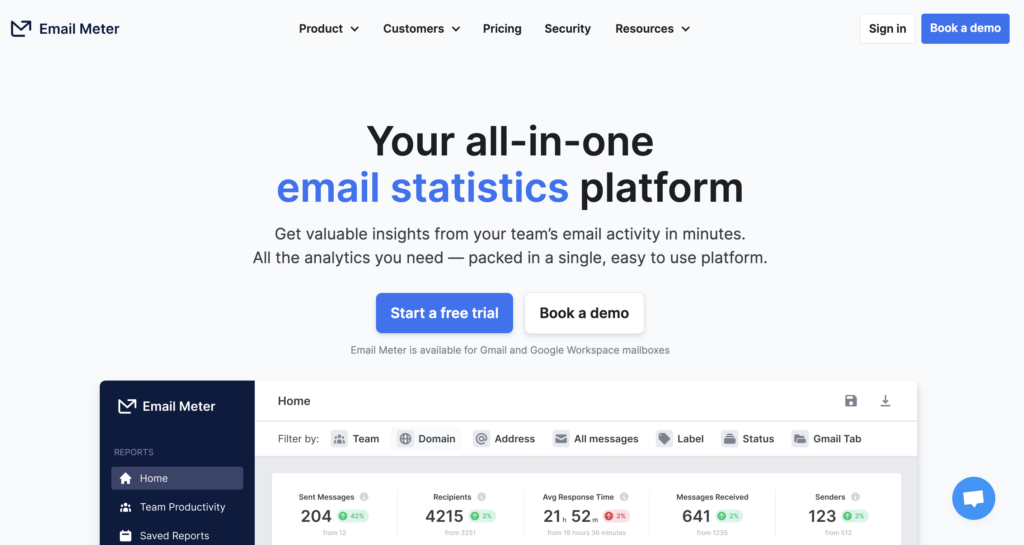
Email Meter is an email statistics platform built for Google Workspace, and is another good option for your email management needs.
Once you connect it to your inbox it will keep track of your activity and display your most important metrics in visual dashboards and reports.
One key thing to note about Email Meter is that it’s best for enterprise companies. This is because the lower-tier plans have limitations that restrict the number of filters and metrics you can access. For small companies, it’s not going to deliver the value you need.
Like timetoreply, there are alerts and goal-setting features built-in, which you can access on the Pro plan and above.
Email Meter is an excellent tool for Gmail users at small companies that need extra insights into their team’s email usage.
That said, there are a few drawbacks.
Related: Read our in-depth, side-by-side comparison of Email Meter and timetoreply here.
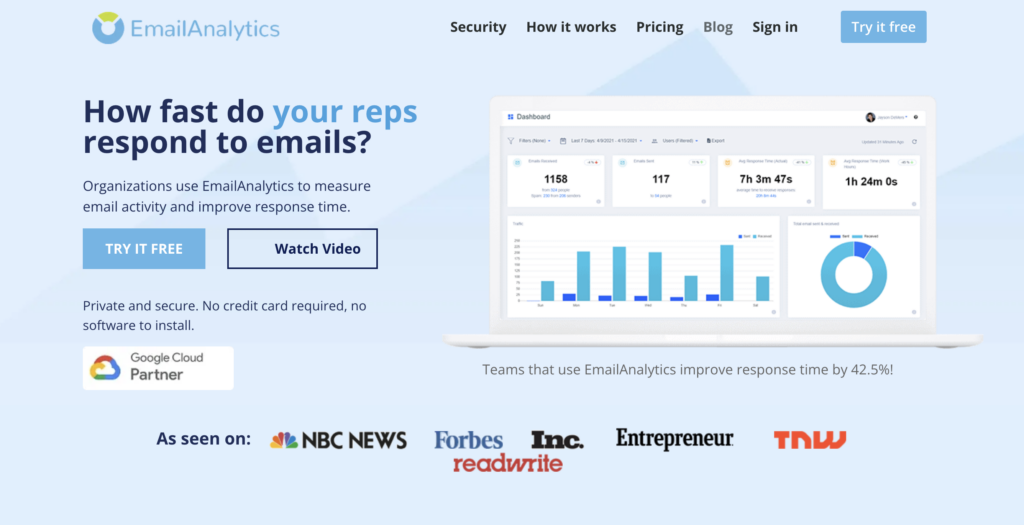
Email Analytics is a platform to help you visualize your team’s email activity and response times across your company.
It’s primarily designed for Gmail, so it’s a good option. Once you connect your team’s Gmail accounts, it’ll pull in your past email data and start tracking everything moving forwards.
There are highly visual dashboards that make it easy to compare and contract trends over time, and it’s ideal for managers who want to get a quick overview of their team’s email performance.
Email Analytics is an excellent option, there’s no doubt about it. But, it’s not the only solution on the market.
It’s missing several key features that you might need in order to translate your Gmail analytics into real business performance.
If you want to integrate your Gmail Analytics tool into your business, features like goal setting are essential, as they ensure your team can use the data in an actionable way.
Related: Read our in-depth, side-by-side comparison of Email Analytics and timetoreply here.
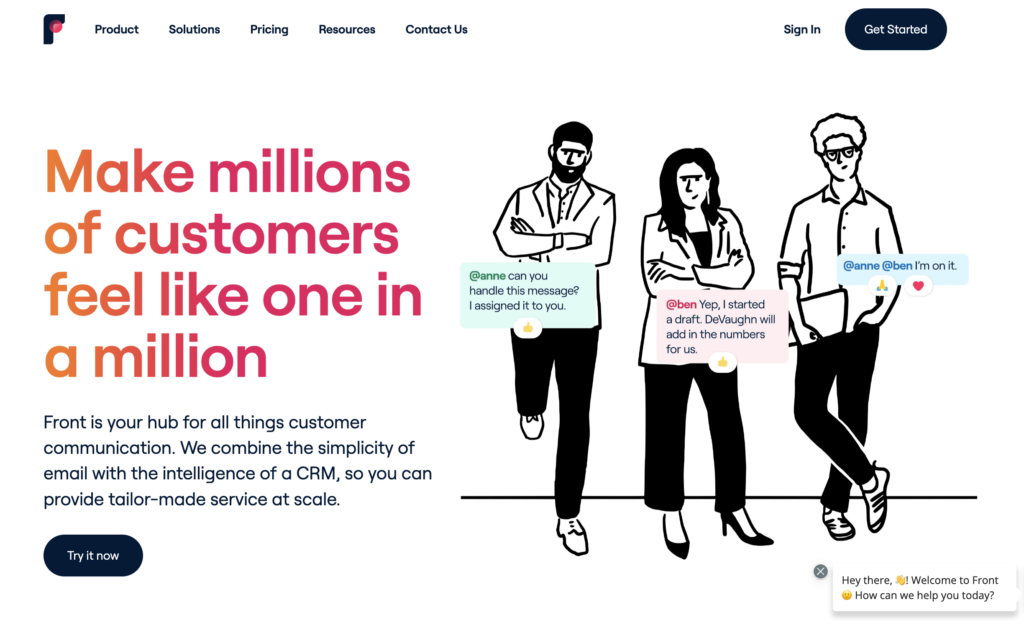
Front App is an email management platform designed to help your team bring all of your email activity to one place.
Rather than being a Gmail analytics tool, it has a much broader goal — to be the go-to place for all of your email activity. Your whole customer service team can use it to track interactions with customers, and add notes or jump into conversations that other team members are having, making it ideal for collaboration.
There are email analytics built into the platform, but you’ll need to be ready to commit to working from Front, rather than using your regular Gmail inbox.
Front App is designed to unify your inboxes and improve collaboration. It does have some email analytics features to help you understand your activity, but it’s not specifically designed to be a Gmail email analytics tool, like timetoreply or the other options we’ve looked at.
Want a full breakdown of Front compared to timetoreply? Read the comparison here.
All of the Gmail email analytics tools we’ve looked at are solid choices.
But, in our option, timetoreply stands above the rest if you’re looking for a powerful, feature-rich, and easy-to-use Gmail email analytics platform.
Once you connect your team’s Gmail accounts, timetoreply will start collecting your activity data and showing you crucial email and reply time insights in rich reports.
You can track every metric you need to judge email performance, from average time to reply across all teams, to individual inboxes.
As well as showing you performance data, timetoreply will help you hit your goals thanks to real-time alerts and SLA management.
Once you start using it, you’ll see your team’s average reply time quickly improve and you’ll know your key customers and sales leads are never being left waiting.



Trusted by high-performing inbound sales teams and customer-facing teams globally.
Close more deals and delight more customers with the faster, smarter, deeper email analytics and performance optimization software that works straight from your team’s inbox.